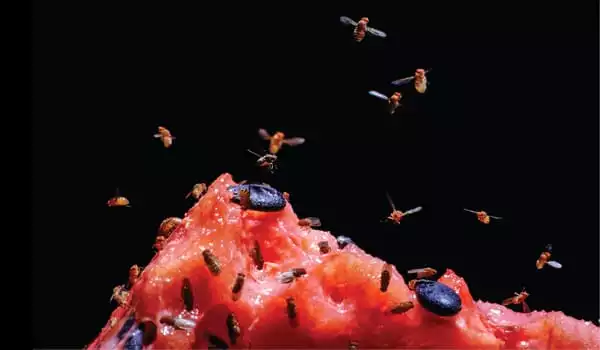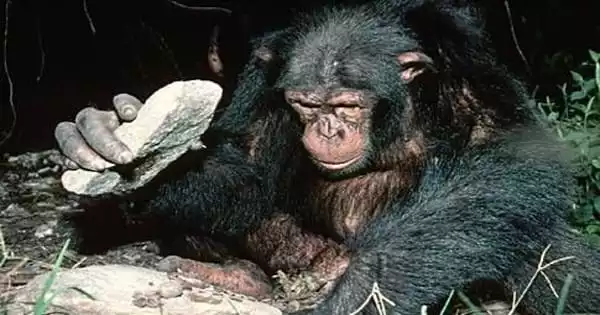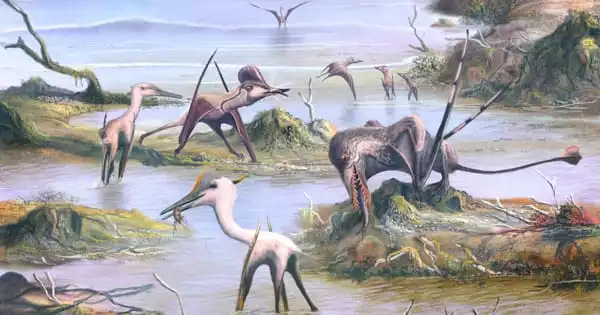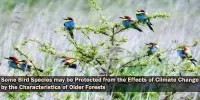Evolution is commonly thought to be a gradual process that occurs over an extended timescale. However, new research indicates that extensive physical and genetic adaptation to the environment can occur in just a few weeks.
Do you believe evolution is a slow, gradual process? Tell that to the fruit flies. Researchers at the University of Pennsylvania utilized a controlled field experiment to show that flies rapidly responded to changing environmental conditions with changes throughout their genome and in a suite of physical characteristics, according to a new paper in Science.
The researchers detected modifications to 60 percent of the flies’ genome over the course of the trial, which lasted only four months. Biologists have built a new paradigm for how to think about the timeline of evolution by directly observing quick and continual adaptation in response to the environment, a phenomena known as adaptive tracking.
“It was an interesting hypothesis that seemed unlikely until we demonstrated it,” says Paul Schmidt, a biology professor in Penn’s School of Arts and Sciences and the paper’s senior author. “What’s interesting about this is the temporal resolution with which we’re witnessing evolutionary processes in real-time,” says Seth Rudman, a co-lead author on the paper who worked on the project as a postdoctoral associate at Penn and is now an assistant professor at Washington State University.
We observe that the populations are able to track differences in the environment. This was not a reaction to a single, specific occurrence, such as a drought. Throughout the experiment, the populations were always changing and evolving.
Professor Paul Schmidt
Just how fast
It has long been known that evolution can occur quickly in fruit flies due to their short lifespans and rapid reproduction. But how fast has remained unknown, specifically if many features may evolve concurrently in response to short-term environmental changes.
Schmidt and colleagues discovered that fruit flies present at the start of the growing season differed significantly from those buzzing around in the late fall in terms of stress tolerance, reproductive health, and even pigmentation in previous investigations at Philadelphia-area orchards. However, the study could not rule out the possibility that new flies were entering the population and generating drastic alterations.
The researchers created an experimental orchard on a plot of land at Pennovation Works, a short distance from Penn’s main campus, to more precisely regulate the settings of their investigations. Multiple enclosures allow Schmidt’s lab members to examine flies in real-world environmental conditions such as cold, heat, and rain, while preventing flies from entering or departing. As a result, the insects in the enclosures at the end of an experiment are known to be direct descendants of those released into the enclosure at the beginning of the study.

Checking in on evolution
In July of 2014, the researchers began the current trial by releasing 1,000 Drosophila melanogaster fruit flies into each of ten enclosures. After that, the flies were fed identical meals but were left to their own devices. At the peak of the experiment, each population had grown to around 100,000 people.
Individual flies and 2,500 eggs were collected from each enclosure once a month, grown independently, and then tested for six different physical features known to be influenced by numerous genes, including as reproductive success and cold tolerance.
Furthermore, during each of the monthly check-ins, the researchers randomly picked 100 flies from each enclosure’s population and sequenced their genomes as a group. They would be able to gain a snapshot of the changing allele frequencies (variations at distinct locations in the genome) throughout time by doing so.
The evidence from both the physical and genomic data was clear: the flies were changing and responding to their surroundings at a rate that no one had ever measured before.
“We observe that the populations are able to track differences in the environment,” Schmidt explains. “This was not a reaction to a single, specific occurrence, such as a drought. Throughout the experiment, the populations were always changing and evolving.”
Fluctuating adaptation
Because flies are short-lived, a few weeks between analyses translated to one to four generations of flies, or around ten generations during the course of the experiment.
Nonetheless, the extent of adaptation was surprising, with more than 60% of the flies’ genome altering directly or indirectly during the experiment. Schmidt and Rudman point out that this does not imply that evolutionary selection is operating on more than half of the genome; some DNA is tugged along when other portions of the genome change, a process known as “genetic draft.” But what made the findings particularly compelling was that the direction of adaptation shifted many times, swinging like a pendulum as environmental conditions changed.
“It was quite startling to believe that a feature might evolve over a specific number of weeks and then reverse course the following month,” Rudman adds. “This portrays a picture of adaptation and selection as very dynamic processes. Natural selection’s direction is changing, as are the targets, and they are changing swiftly.”
Previous studies, according to the researchers, may have overestimated the rate of adaptation because they only looked at genomic alterations between two relatively distant points in time, say, A and B. This experiment was designed to expose what happened in between — a twisting route of adaptation from A to B to C and back to A — changes that would have been otherwise undetected by looking at the same population regularly and frequently.
Despite the fact that fruit flies reproduce on a far shorter time scale than humans, the researchers believe their findings apply to longer-lived and slower-regenerating species such as humans.
“I would suggest that similar processes are occurring in a variety of organisms, but they are more difficult to evaluate across suitable time scales,” Schmidt says. “So, for fruit flies, the pressures to adapt could be seasonal, whereas for people, it could be climate change, agriculture, or the use of milk as a food source. This could be a widespread occurrence. Everything is now our responsibility to define the time scale on which it is taking place.”
















